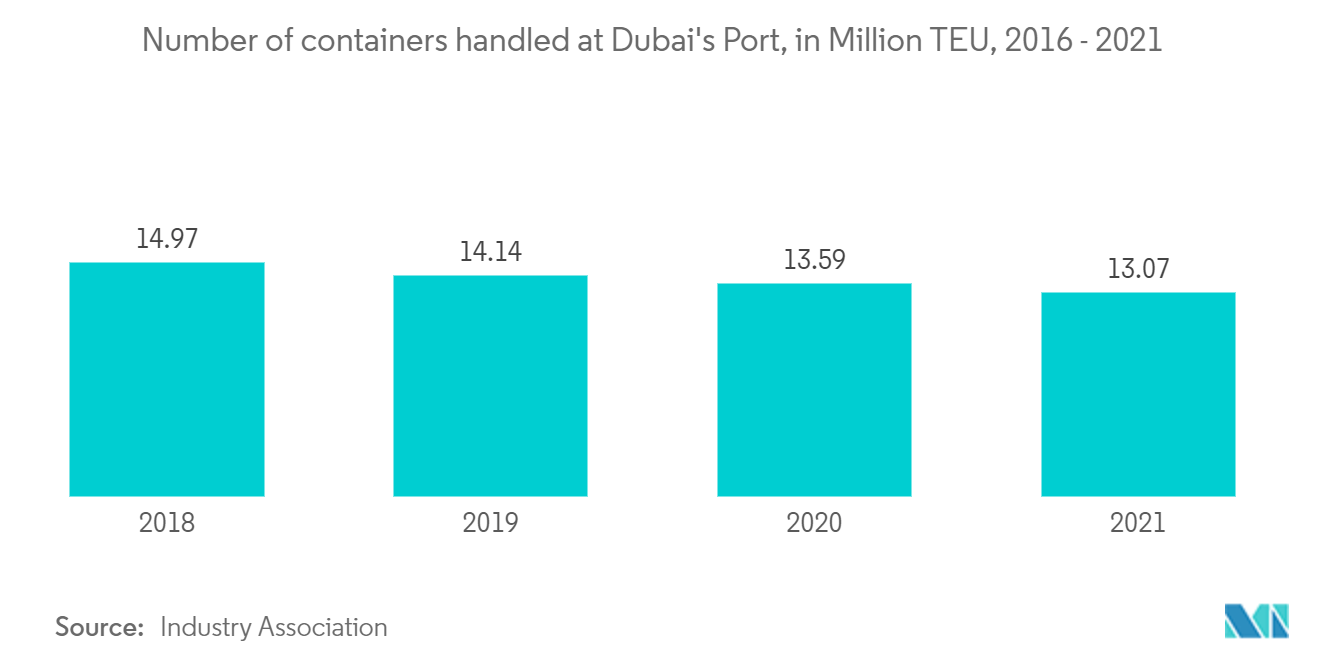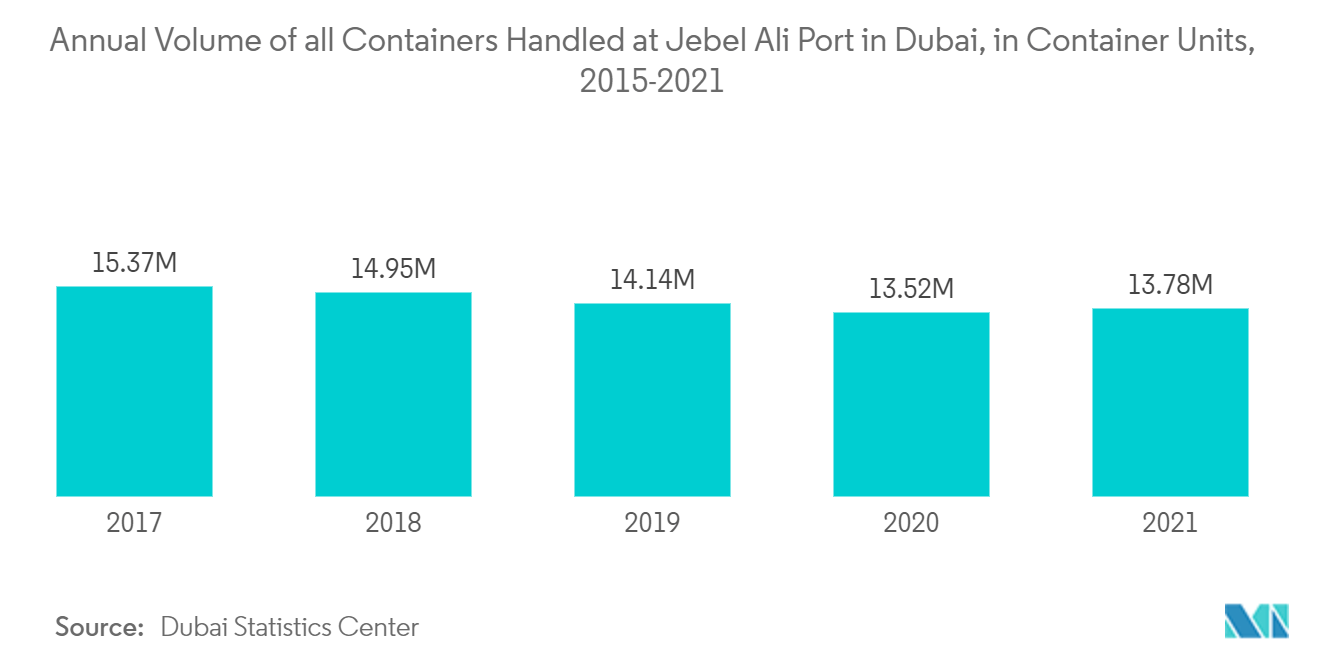Market Trends of UAE Container Terminal Operations Industry
This section covers the major market trends shaping the UAE Container Terminal Operations Market according to our research experts:
Increasing Demand for Container Seaborne Trade
Maritime trade accounts for nearly 90% of world trade. This is because it is the cheapest and most efficient means of transport, especially for large goods. Ports of the United Arab Emirates facilitate maritime trade. Thus, maritime trade is an important sector driving the region's economic growth and development.
The UAE has several ports, such as Jebel Ali, Mina Rashid, Zayed Port, Fujairah Port, and Khalifa Port. At least two of these ports are included in the world's top 50 container ports by the World Shipping Council.
The UAE ports account for nearly 61% of cargo destined for the GCC countries of Oman, Bahrain, Qatar, Kuwait, and Saudi Arabia (and the UAE). Apart from oil ports, the United Arab Emirates has 12 commercial and trading ports with 310 berths and 80 million tons of cargo tonnage.
Sea freight shipping from the UAE is generally economical, with prices ranging from USD 600 to USD 2,000, depending on destination and container size. Although exports have declined over the years, the country still holds its position as the 32nd-largest export economy in the world. Exports include crude and refined oils, petroleum gas, diamonds, and gold. Imports include automobiles, jewelry, refined petroleum, diamonds, and gold.

Increasing Maritime Trade
The United Arab Emirates is on track to dominate global maritime trade as a slew of new port infrastructure is delivered. The country has built world-class infrastructure in ports and logistics. By increasing port capacity, the UAE can now meet surging trade volumes in emerging markets.
By 2050, four of the five largest economies will comprise developing countries. These countries are China, India, Brazil, and Russia. The IMF estimates that these markets will account for 45% of global production by 2025.
Due to its strategic geographical position between East and West, the UAE is a global trading hub and an essential gateway to these emerging markets. Port investments make the UAE the third-largest re-export market in the world.
It has nine operating ports, and its flagship, Jebel Ali, is the largest container terminal between Rotterdam and Singapore. The annual container throughput of Jebel Ali Port in 2021 was about 13.7 million units.
According to the World Bank's Doing Business Report 2022, the country is the largest shipping and port player in the Middle East and North Africa and the fifth largest in the world.
The United Arab Emirates is home to several large shipowners, including branches of international shipowners. The UAE's offshore industry has weathered the storm relatively better than other parts of the world, and the region's vessel utilization rate is higher than the global average. The United Arab Emirates continues to be an essential hub for many offshore shipowners.

